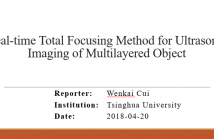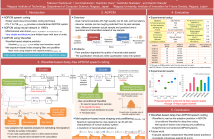- Transducers
- Spatial and Multichannel Audio
- Source Separation and Signal Enhancement
- Room Acoustics and Acoustic System Modeling
- Network Audio
- Audio for Multimedia
- Audio Processing Systems
- Audio Coding
- Audio Analysis and Synthesis
- Active Noise Control
- Auditory Modeling and Hearing Aids
- Bioacoustics and Medical Acoustics
- Music Signal Processing
- Loudspeaker and Microphone Array Signal Processing
- Echo Cancellation
- Content-Based Audio Processing

- Read more about Crowdsourcing Emotional Speech
- Log in to post comments
We describe the methodology for the collection and annotation of a large corpus of emotional speech data through crowdsourcing. The corpus offers 187 hours of data from 2,965 subjects. Data includes non-emotional recordings from each subject as well as recordings for five emotions: angry, happy-low-arousal, happy-high-arousal, neutral,
- Categories:
 7 Views
7 Views
- Read more about TOWARDS PREDICTING PHYSIOLOGY FROM SPEECH DURING STRESSFUL CONVERSATIONS: HEART RATE AND RESPIRATORY SINUS ARRHYTHMIA
- Log in to post comments
Being affected by mental stress during conversations might have a direct or indirect effect on our speech acoustics as well as on our physiological responses. This paper presents a study on finding the relationship between these two modalities, speech acoustics and physiology, during stressful conversations between humans. Heart rate and respiratory sinus arrhythmia have been considered as physiological variables in the present study. Two datasets, one from stress induction sessions and the other one from in-lab discussions of relationship conflicts between couples, have been analyzed.
- Categories:
 7 Views
7 Views
- Read more about QUANTISATION EFFECTS IN DISTRIBUTED OPTIMISATION
- Log in to post comments
In this presentation, the effects of quantisation on distributed convex optimisation algorithms are explored via the lens of monotone operator theory. Specifically, by representing transmission quantisation via an additive noise model, we demonstrate how quantisation can be viewed as an instance of an inexact Krasnoselskii-Mann scheme. In the case of two distributed solvers, the Alternating Direction Method of Multipliers and the Primal Dual Method of Multipliers, we further demonstrate how an adaptive quantisation scheme can be constructed to reduce transmission costs between nodes.
- Categories:
 10 Views
10 Views
- Read more about MULTI-VIEW AUDIO-ARTICULATORY FEATURES FOR PHONETIC RECOGNITION ON RTMRI-TIMIT DATABASE
- Log in to post comments
In this paper, we investigate the use of articulatory informa-
tion, and more specifically real time Magnetic Resonance
Imaging (rtMRI) data of the vocal tract, to improve speech
recognition performance. For the purpose of our experiments,
we use data from the rtMRI-TIMIT database. Firstly, Scale
Invariant Feature Transform (SIFT) features are extracted for
each video frame. Afterwards, the SIFT descriptors of each
frame are transformed to a single histogram per picture, by
using the Bag of Visual Words methodology. Since this kind
- Categories:
 12 Views
12 Views
- Read more about A CONVERSATIONAL NEURAL LANGUAGE MODEL FOR SPEECH RECOGNITION IN DIGITAL ASSISTANTS
- Log in to post comments
Speech recognition in digital assistants such as Google Assistant can
potentially benefit from the use of conversational context consisting of user
queries and responses from the agent. We explore the use of recurrent,
Long Short-Term Memory (LSTM), neural language models (LMs) to model the conversations
in a digital assistant. Our proposed methods effectively capture the context of
previous utterances in a conversation without modifying the underlying LSTM
architecture. We demonstrate a 4% relative improvement in recognition performance
- Categories:
 64 Views
64 Views
- Read more about Grid-Free Direction-of-Arrival Estimation with Compressed Sensing and Arbitrary Antenna Arrays
- Log in to post comments
We study the problem of direction of arrival estimation for arbitrary antenna
arrays. We formulate it as a continuous line spectral estimation problem and solve it under
a sparsity prior without any gridding assumptions. Moreover, we incorporate the
array's beampattern in form of the Effective Aperture Distribution Function
(EADF), which allows to use arbitrary (synthetic as well as measured) antenna
arrays. This generalizes known atomic norm based grid-free DOA estimation methods (that
- Categories:
 42 Views
42 Views
- Read more about REAL-TIME TOTAL FOCUSING METHOD FOR ULTRASONIC IMAGING OF MULTILAYERED OBJECT
- Log in to post comments
Lecture.pptx
- Categories:
 19 Views
19 Views
- Read more about REAL-TIME TOTAL FOCUSING METHOD IMAGING FOR ULTRASONIC INSPECTION OF THREE-DIMENSIONAL MULTILAYERED MEDIA
- Log in to post comments
Poster.pdf
- Categories:
 9 Views
9 Views